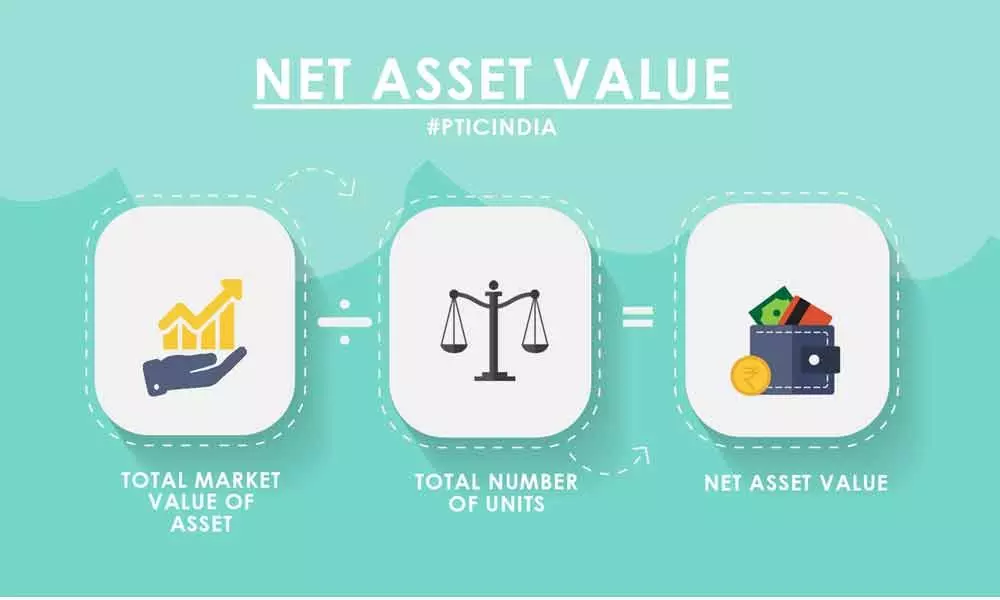Live
- Ullal Woman Files Complaint Against Husband Over Instant Talaq and Abuse
- Analysis: Russia's Nuclear-Capable Missile Marks Shift from Cold War Deterrence Doctrine
- OpenAI Plans In-House Browser "SearchGPT" to Compete with Google Chrome
- MP: Sanatan Hindu Ekta march gets support from BJP & Congress
- Trinamool to hold crucial Working Committee meeting on Monday, organisational reshuffle on agenda
- Who is Breon Peace? The US Attorney Behind the Indictment of Gautam Adani
- Quick commerce workforce expansion to surge by 60 pc in India
- Omar Abdullah to embark on Umrah visit to Saudi Arabia on Nov 24
- Hyderabad Population 2024: 1.6 Crore People and 85 Lakh Vehicles Under HYDRAA's Jurisdiction
- "Wanaparthy District Collector Adarsh Surabhi Orders Precautions to Ensure Safe Mid-Day Meals"
Just In
Don't rely on NAV to gauge mutual funds


During a recent a conversation with one of the investors, I have stumbled upon one of the very old misconceptions of mutual fund (MF) investments.
During a recent a conversation with one of the investors, I have stumbled upon one of the very old misconceptions of mutual fund (MF) investments.
I was discussing about topping up an existing investment and so am checking for their asset allocation.
The fund is a dynamic asset allocator which could switch from equity to debt and vice versa. However, the choice of asset and the proportion is discretionary of the fund manager.
So, as the markets picked up and again going through a tumble with an increased volatility I thought to wait out for a few more days before investing.
Also, was trying to understand how the portfolio is doing and check out if there would be any changes in the asset allocation.
But before I could say a word, the investor said if we were waiting for the NAV to go down for us to invest.
It's true that the Net Asset Value (NAV) of a new fund starts at Rs 10 per unit but then the fund could undergo various changes like merger with another fund, dividend distribution, etc., which could impact and so reflect a NAV which could differ from that of another fund in that same category.
Of course, what's important is the returns generated by the fund rather than the NAV of the fund, though a lower NAV would result in higher number of units.
But that couldn't be the only parameter for considering investment in a fund.
For instance, a NAV of a fund is 10 and another is 50 which grows over a same period to 11 and 55 respectively. Now, if Rs 5,000 was simultaneously in both funds at their initial value, it would allocate 500 and 100 units for each of the funds respectively.
Now, that the NAV has increased the fund value would translate to Rs 5,500 at both the funds. So, a lower NAV, in this case didn't help the investor when the returns of the fund remained same.
And returns on a fund are an outcome of the execution of the investment objective and not the NAV at which a fund has begun or considered for.
A possible adverse impact a higher NAV would have is when a dividend is received.Because, dividends are declared on the face value of the units and a higher NAV would result in lesser number of units.
This could result in lower absolute value though the percentage return wouldn't get affected.
So, a fund performance should be compared based on the return generated in the same period and not the lower or higher NAV of the fund.
The general confusion is due to the way investors treat the MF NAV similar to that of a stock price. The stock price is dependent upon the demand-supply mechanism of the stock market and it could be available at a premium or discount to its intrinsic or actual value.
Whereas NAV of the fund reflects the value of the portfolio on a given day and it's the actual value as it is.
In reality, investors needn't worry about the NAV when planning to invest in a MF as it turns out to be totally irrelevant.
When comparing two identical funds most likely from the same category then despite their varying NAV, the assessment should be on how they have performed against their benchmark and then the peers.
The myth of low NAV has resulted in many investors exposing themselves to unknown funds during their initial offer and even Securities Exchange Board of India (SEBI) has changed the nomenclature of all the new fund offering of a MF scheme as New Fund Offer (NFO) and a stock offering to the public as Initial Public Offer (IPO).
So, as the portfolio remained same during the current turmoil and as it suited investor's risk profile along with the goal timelines, I have made the additional purchase on the existing fund.
The author is a co-founder of "Wealocity", a wealth management firm and could be reached at [email protected])

© 2024 Hyderabad Media House Limited/The Hans India. All rights reserved. Powered by hocalwire.com






